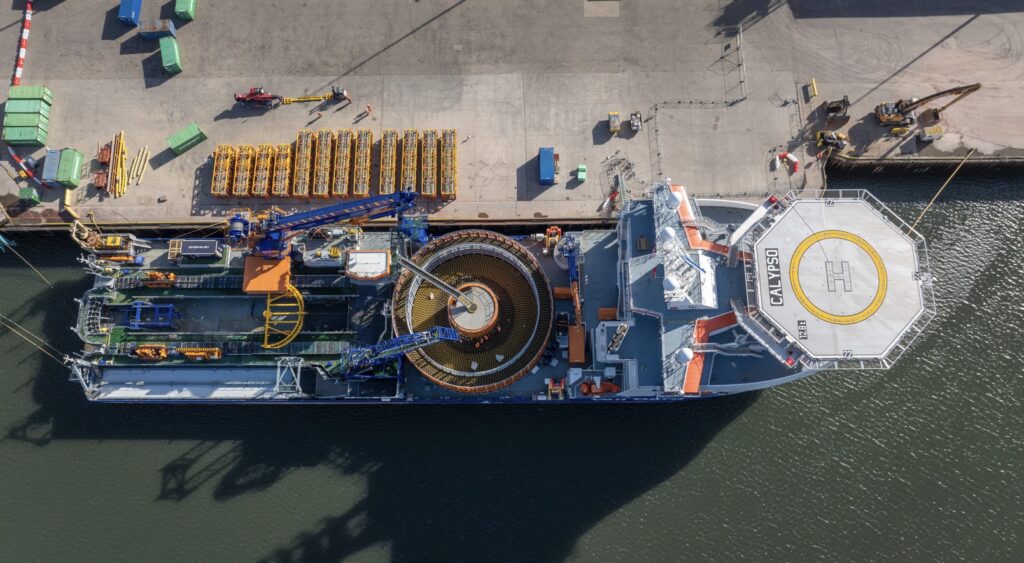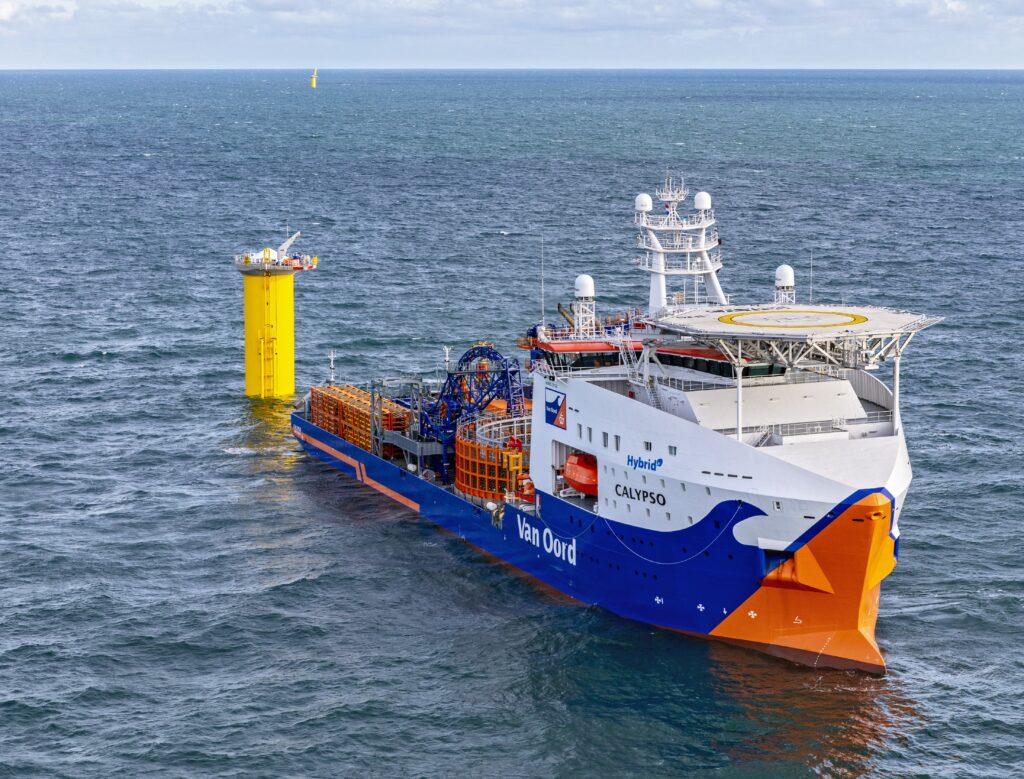Van Oord’s advanced cable-laying vessel Calypso has commenced its first project by installing cables at an offshore wind farm.
The Calypso is currently working on RWE’s Sofia offshore wind farm, located on Dogger Bank in the central North Sea, approximately 195 kilometers from the UK’s northeast coast. With a capacity of 1.4 GW, the wind farm is expected to power 1.2 million UK homes.
Under a contract signed in 2021, Van Oord is tasked with the design, engineering, procurement, construction, and installation of monopile foundations and inter-array cables for the wind farm. The Calypso will lay approximately 360 kilometers of inter-array cables.
Other vessels, such as the installation vessel Aeolus and the special service support vessel Baltic Explorer, are also involved in the Sofia project.
The inter-array cable was shipped from Greece to the UK’s Port of Blyth.

“With the Calypso now operational, we have significantly strengthened our cable installation fleet,” said Arnoud Kuis, Managing Director Offshore Energy at Van Oord. “This milestone reflects our commitment to sustainable technology.”
Calypso is Van Oord’s second cable-laying vessel, after Nexus. It features hybrid engines, a large battery pack, a shore supply connection, and an energy management system, making it ready for future e-fuels.
The vessel has two cable carousels with a total capacity of 8,000 tonnes and can lay dual HVDC cables simultaneously.
Van Oord received the vessel from VARD on 29 August 2023, with christening taking place ten days later in Rotterdam.
The Sofia wind farm will feature 100 SG 14-222 DD turbines, with 44 equipped with recyclable blades. Commissioning is set for 2026.
Original Story at www.offshorewind.biz
